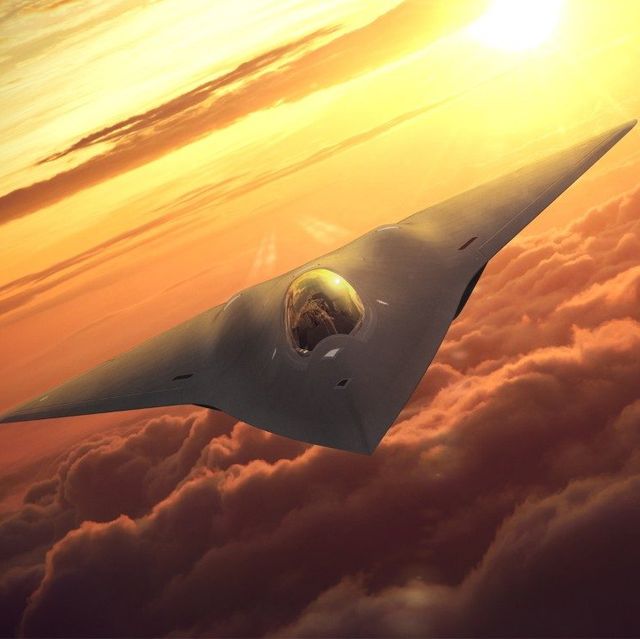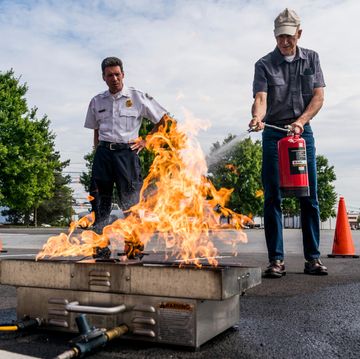- The U.S. Air Force is allocating nearly $20 billion over five years to develop the Next Generation Air Dominance fighter jet, the replacement for the F-22 Raptor.
- NGAD will include not only a manned plane, but unmanned fighter-like drones, too.
- The U.S. will also buy more NGAD fighters than it bought F-22s, as each manned plane will control several in combat.
The U.S. Air Force is about to drop some serious coin on the future of air power. The service will spend almost $20 billion over five years to develop Next Generation Air Dominance (NGAD), its secret new sixth-generation fighter jet and future replacement for the F-22 Raptor. NGAD will also be the first aircraft program conceived from the start as a combination of both manned and unmanned aircraft.
Raptor Replacement
In 2020, then Assistant Secretary of the Air Force Will Roper revealed the air service had designed and flown a prototype of the NGAD fighter in just one year, with the help of new digital engineering technologies. The aircraft design and other details were never revealed, nor was the identity of the defense contractor involved.
Since then, the service has teased out a handful of other details. The name itself, Next Generation Air Dominance, makes it clear that the aircraft is not a fifth-generation jet like the F-22 Raptor or the F-35 Lightning II, but a generational leap ahead that will make it, unless another country beats America to it, the world’s first sixth-generation fighter. NGAD’s capabilities could define the new generation. These could include daytime or optical stealth, laser weapons, and the use of artificial intelligence to reduce pilot workload.
In May 2022, Air Force Secretary Frank Kendall said each manned NGAD aircraft will cost “multiple hundreds of millions of dollars.” A F-35A Lightning II, by comparison, costs $82.5 million. Air & Space Forces Magazine reports that the service will buy between 200 and 250 manned NGAD aircraft, about the same as the number of B-21 Raider bombers the service would ultimately prefer. The Air Force has also said there might be two versions of the manned fighter, one for the European Theater, perhaps carrying a larger weapons payload, and one for the Pacific Theater, with a longer range.
Now, Air & Space Forces reports that the service will spend $19.5 billion over five years on NGAD. The Air Force will pick two companies this year to develop their versions of the manned NGAD aircraft, with one ultimately picked to build the final design.
Manned and Unmanned
Unlike previous fighters, the manned NGAD fighter will be complemented by unmanned aircraft known as Collaborative Combat Aircraft (CCA). CCA will be a stealthy, high performance autonomous aircraft with the ability to carry a variety of payloads, from sensors to jammers and weapons.
Unmanned CCA planes will operate as extensions of the manned NGAD fighter, adding firepower and sensor reach. CCA planes will fly ahead of the manned NGAD plane, using their own sensors to sweep the skies and the ground below, allowing for early detection of threats. This delegating of sensor use could allow the manned plane to operate with its sensors off entirely, making it even harder to detect by enemy forces.
In the air-to-air role, NGAD could direct its unmanned minions to ambush enemy aircraft at long ranges while remaining hidden, acting as flying magazines of missiles. In the air-to-ground role, CCA bots could fly ahead and jam enemy radar and communications, paralyzing the enemy’s ability to mount an effective defense, then destroying surface-to-air missile threats. The intent is to allow the NGAD pilot to act as the puppet-master, with the robotic aircraft taking all the risks.
The Air Force will spend $8.8 billion over the same 5-year period to develop CCA, which will be individually cheaper, thanks to the lack of a pilot, life support systems, and a more specialized mission profile. This allows the Air Force to buy the drone in greater numbers; ultimately, the service wants as many as 1,000 CCA drones. The Air Force will pick three companies later this year to build and fly prototypes, with one or two becoming the final aircraft.
Wargaming the Future
In 2023, the Mitchell Institute, an air-power think tank, ran a wargame simulation designed to test the effectiveness of pairing sixth-generation aircraft and CCAs. Over the course of an air campaign designed to destroy Chinese air and naval forces surrounding Taiwan, CCAs were able to “disrupt, confuse, overwhelm (People’s Liberation Army) air defense targeting,” “identify targets for follow-on attacks,” and “gain the degree of air superiority needed to enable Allied penetrating strikes.”
Wargamers playing the Allied side used CCAs to force China’s KJ-500 airborne early warning and control aircraft to reveal themselves, allowing the Allied players to target and kill them. This had the result of blinding Chinese forces operating out of range of their land-based radars, reducing their effectiveness at long ranges. The cheap, unmanned planes also acted as missile sponges, sacrificing themselves in order to exhaust Chinese fighters of their missile stores, which in turn left them vulnerable to American planes.

Kyle Mizokami is a writer on defense and security issues and has been at Popular Mechanics since 2015. If it involves explosions or projectiles, he's generally in favor of it. Kyle’s articles have appeared at The Daily Beast, U.S. Naval Institute News, The Diplomat, Foreign Policy, Combat Aircraft Monthly, VICE News, and others. He lives in San Francisco.













